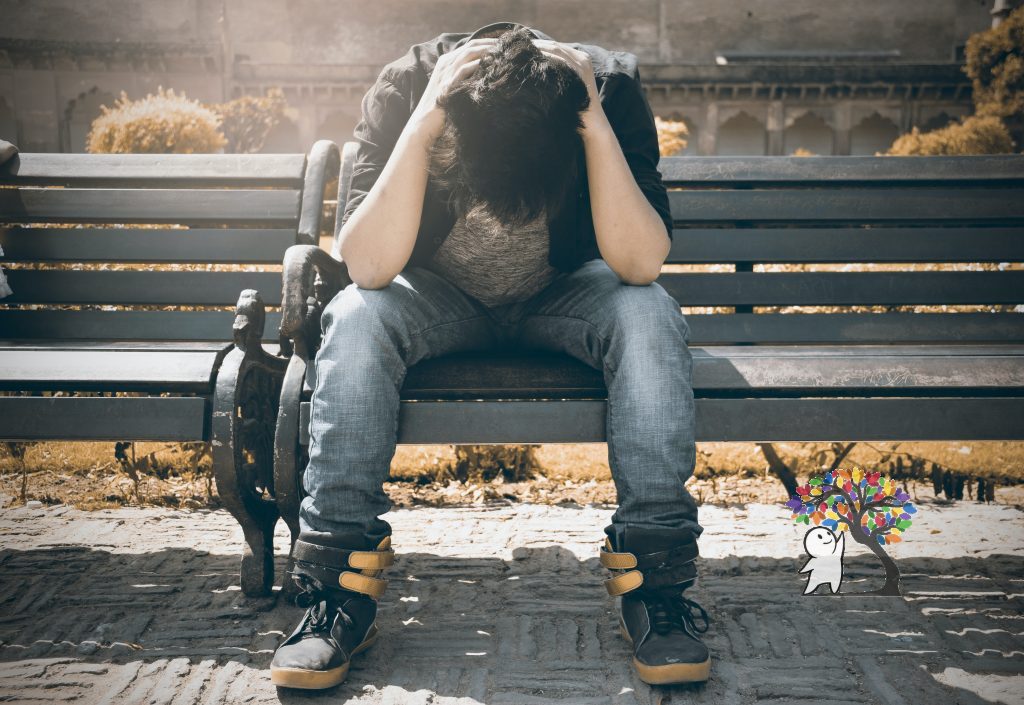Emotional Flatlining: What Is It? (Anhedonia)

Disclaimer: This article is for informative purposes only. It is important to see a doctor or other mental health professional if you feel that you feel that you are struggling.
We can all think of things that make us happy. Perhaps it’s hanging out with friends, enjoying a delicious meal, or maybe partaking in a certain hobby. We do these things because they’re enjoyable and we get pleasure out of them. However, what if you stopped feeling enjoyment out of normally fun activities? What if you never felt any enjoyment out of anything? This is what’s known as anhedonia, otherwise recognized as emotional flatlining. The resulting numbness of this condition can be overwhelming and scary, however, it’s something that not everyone knows about. In this article, we’ll be discussing anhedonia and shed some light on the lesser known details.

Types of Anhedonia
- Social: Involves withdrawing from others because you lose any interest in being with other people.
- Physical: Happens when there is a lack of pleasure from physical items and/or sensations. For example, eating your favorite food no longer gives you any enjoyment, or perhaps your favorite song means nothing to you anymore.
With anhedonia, nothing seems to matter anymore so you find yourself home and isolated. Relationships deteriorate, you miss out on events, and everything just feels mundane (Purdie 2018).

So What Causes Anhedonia?
Emotional flatlining can arise in a multitude of ways. Most commonly, it is a core symptom of depression. Sometimes it’s a result of dealing with a life changing illness (Bhandari 2018). Other times prescription medications can bring out anhedonia; coming from antidepressants to even antibiotics (Kelm 2016). It is important to note that anhedonia is a deeper problem than simply feeling numb. While people, and especially those with depression, may feel occasional numbness, anhedonia is much more chronic and often needs directed treatment. On a physiological level, the brain chemistry in regards to reward and motivation are altered, thus separating it from numbness (Newman 2018).

How is Anhedonia Diagnosed?
Someone experiencing anhedonia may have any of the following:
- Withdrawal from social situations and relationships
- Faking emotions
- Depressed mood
- Lack of interest in intimacy
- Negative feelings
- Flat affect
Source: (Purdie 2018)
The condition is diagnosed by talking with a doctor and keeping track of your symptoms. Your doctor will try to rule out other possibilities such as physical ailments like thyroid issues or malnutrition. Otherwise, they will take a look at your moods and personal experiences. From there they move into treatment options, which can be tricky (Newman 2018).

How Is It Treated?
Unfortunately anhedonia is challenging to treat as there are many variables going into it. However, it is very possible to treat and often requires fine tuning to find the best course of action. Generally speaking, your doctor will work to eliminate possible underlying causes. As it’s commonly associated with depression, they may prescribe antidepressants. However, sometimes it’s a result of the medicine which would require changing medication. It is crucial to know that you should see your doctor with any advice regarding medication. In other words, consult your doctor before making any decisions about what you’re taking and how. Other than medications, anhedonia can be less commonly treated with electroconvulsive therapy and similar physical therapeutic processes (Purdie 2018).

Conclusion
Losing the ability to feel can be horrifying and confusing. However, there are always people and treatments out there to help you. Anhedonia is much more complex than numbness and should be treated as such. The most important takeaway is that it’s always possible to feel again. What are your thoughts on the matter? What are other signs of emotional flatlining? Let us know in the comments!
References:
- Bhandari, Smitha. “Anhedonia: Symptoms, Causes, Treatment.” WebMD, WebMD, 25 Oct. 2018, www.webmd.com/depression/what-is-anhedonia#2.
- Newman, Tim. “Anhedonia: Why Does Nothing Feel Good Anymore?” Medical News Today, MediLexicon International, 31 Jan. 2018, www.medicalnewstoday.com/articles/320737.
- Purdie, Jennifer. “What Is Anhedonia?” Healthline , Healthline, 17 Sept. 2018, www.healthline.com/health/depression/anhedonia#treatments.
- “What Is Emotional Flatlining? (Anhedonia, No Feelings).” Performance by Jackie Kelm, Www.GetJoyBack.com., GetJoyBack, 29 May 2016, What is Emotional Flatlining? (Anhedonia, No Feelings).



Responses